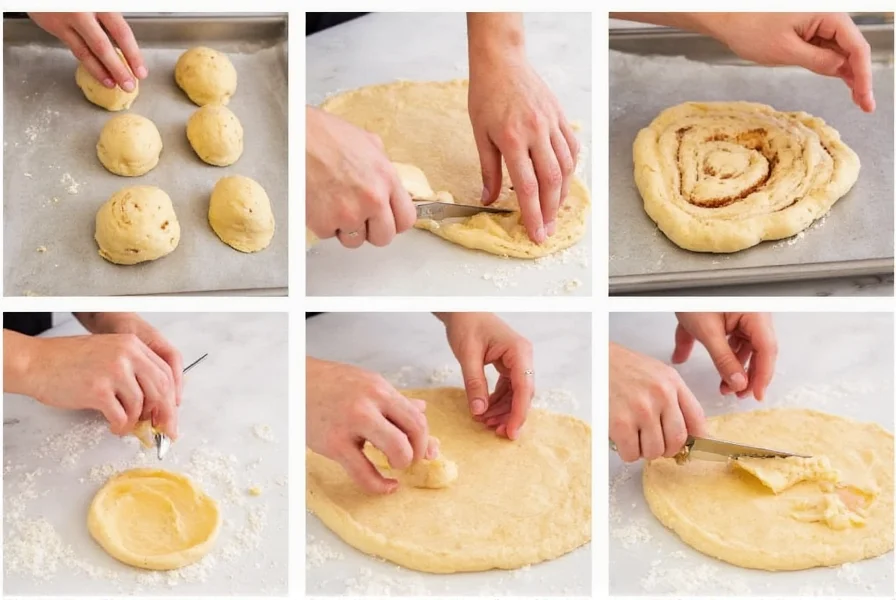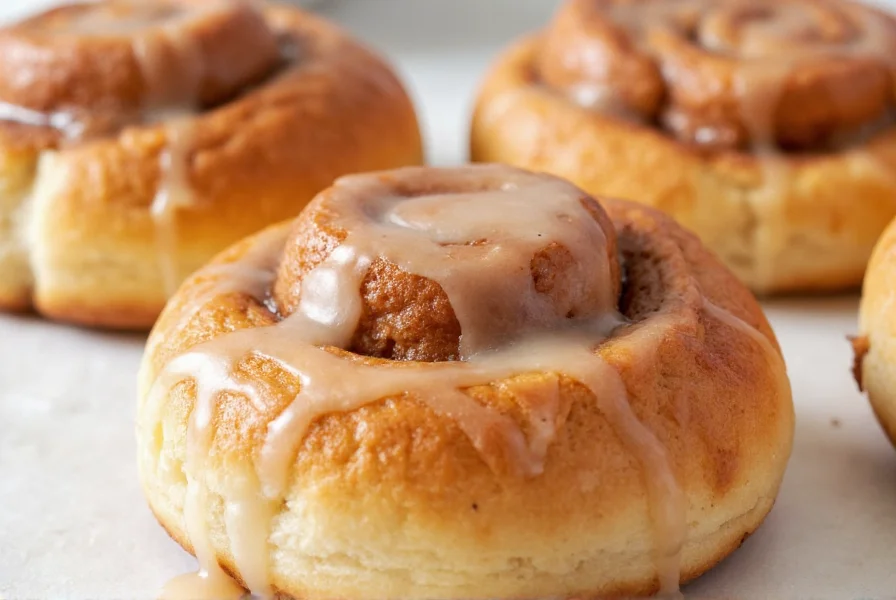Making delicious cinnamon buns doesn't require advanced baking skills or specialty ingredients. Bisquick simplifies the process while delivering consistently soft, flavorful results that rival more complicated recipes. This approachable method transforms pantry staples into an impressive breakfast treat that family and friends will love.
Essential Ingredients for Perfect Bisquick Cinnamon Buns
Quality ingredients make the difference between good and great cinnamon buns. Here's what you'll need for the base recipe that yields 8-10 servings:
| Ingredient | Amount | Notes |
|---|---|---|
| Bisquick baking mix | 2 cups | Original formula works best |
| Milk | 2/3 cup | Whole milk provides optimal texture |
| Melted butter | 1/3 cup | Unsalted preferred |
| Brown sugar | 1/2 cup | Packed firmly |
| Cinnamon | 2 tablespoons | Freshly ground yields best flavor |
| Vanilla glaze | 1/2 cup | Store-bought or homemade |
Step-by-Step Preparation Guide
Follow these straightforward instructions for flawless Bisquick cinnamon buns every time:
- Prepare the dough: In a large bowl, combine Bisquick mix and milk until a soft dough forms. Knead gently 10-12 times until smooth.
- Roll out the dough: On a lightly floured surface, roll the dough into a 12x9 inch rectangle, approximately 1/4 inch thick.
- Create the filling: Mix brown sugar and cinnamon thoroughly. Spread melted butter evenly over the dough, then sprinkle with the sugar-cinnamon mixture.
- Shape the buns: Starting from the long side, roll the dough tightly. Cut into 8-10 equal slices using dental floss for clean cuts.
- Bake: Place rolls in a greased 9-inch square pan. Bake at 350°F for 18-22 minutes until golden brown.
- Finish: Drizzle with vanilla glaze while still warm for maximum absorption.
Proven Baking Techniques for Superior Results
Professional bakers use these techniques to elevate simple Bisquick cinnamon buns:
- Dough consistency matters: If the dough feels too sticky, add 1-2 teaspoons of Bisquick. Too dry? Add milk by the teaspoon.
- Cutting method: Use unflavored dental floss instead of a knife to prevent squishing the rolls.
- Baking temperature: An oven thermometer ensures accurate temperature, preventing under or over-baking.
- Resting time: Let buns rest 5 minutes after baking before glazing for optimal texture.

Popular Recipe Variations to Try
Customize your Bisquick cinnamon buns with these tested variations:
- Cream cheese swirl: Mix 4 oz softened cream cheese with 1/4 cup sugar before spreading on the dough
- Nutty crunch: Add 1/4 cup chopped pecans or walnuts to the cinnamon-sugar mixture
- Apple cinnamon: Layer 1/2 cup finely diced apples over the butter before adding filling
- Overnight preparation: Prepare rolls, place in pan, cover and refrigerate overnight for morning baking
Storage and Serving Recommendations
Maximize freshness and flavor with these storage tips:
- Store in an airtight container at room temperature for up to 2 days
- Refrigerate for up to 5 days; reheat individual buns for 15 seconds in microwave
- Freeze unbaked rolls on a baking sheet, then transfer to freezer bags for up to 3 months
- Thaw frozen rolls overnight in refrigerator before baking
- Serve warm with additional glaze or cream cheese frosting for special occasions
Troubleshooting Common Issues
Resolve these frequent Bisquick cinnamon bun problems:
- Dry texture: Overmixing or too much Bisquick causes dryness. Measure Bisquick by spooning into measuring cup.
- Flat rolls: Dough rolled too thick prevents proper rising. Maintain 1/4 inch thickness for ideal rise.
- Filling leakage: Too much butter causes filling to seep out. Use exact measurements and spread evenly.
- Uneven baking: Rotate pan halfway through baking for consistent color and texture.

Frequently Asked Questions
Can I make Bisquick cinnamon buns without milk?
Yes, you can substitute milk with water, almond milk, or oat milk. However, dairy milk produces the best texture and flavor. For optimal results, use whole milk when possible.
How do I prevent my Bisquick cinnamon buns from becoming soggy?
To prevent sogginess, ensure your baking pan is properly greased, don't overfill with filling, and allow buns to cool slightly before removing from the pan. Baking at the correct temperature (350°F) is crucial for proper moisture balance.
Can I prepare Bisquick cinnamon buns ahead of time?
Absolutely. You can prepare the rolls, place them in the baking dish, cover tightly, and refrigerate for up to 24 hours before baking. When ready, let them sit at room temperature for 30 minutes, then bake as directed.
Why do my Bisquick cinnamon buns fall flat after baking?
Flat buns typically result from over-rising or opening the oven door too early. Bake immediately after shaping, and avoid opening the oven during the first 15 minutes of baking. Ensure your Bisquick hasn't expired, as old baking powder loses its leavening power.
What's the best way to reheat leftover Bisquick cinnamon buns?
For best results, wrap individual buns in a damp paper towel and microwave for 15-20 seconds. Alternatively, place on a baking sheet and warm in a 300°F oven for 5-7 minutes. This method preserves moisture while restoring freshness.











 浙公网安备
33010002000092号
浙公网安备
33010002000092号 浙B2-20120091-4
浙B2-20120091-4